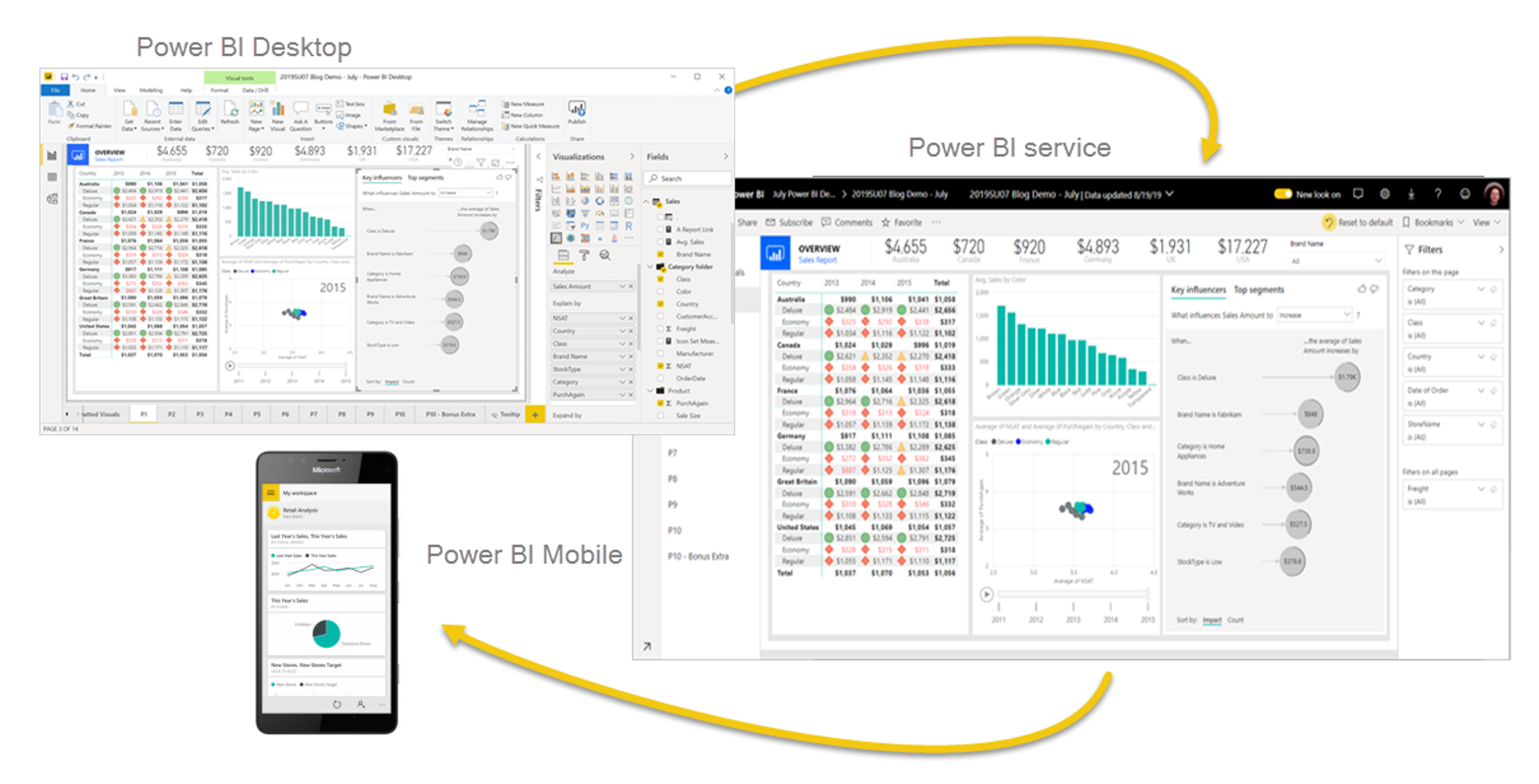Describe using Power BI to build data-driven analytics
From customer and employee data metrics for company goals, to sales and acquisitions, businesses are drowning in data, but this data is only as good as your ability to interpret and communicate its meaning. That's where Power BI (Business Intelligence) comes into play.
Microsoft Power BI is a collection of software services, apps, and connectors that work together to turn your unrelated sources of data into coherent, visually immersive, and interactive insights. From data in a simple Microsoft Excel workbook, or a collection of cloud-based and on-premises hybrid data warehouses, Power BI lets you easily connect to your data sources, clean, and model your data without affecting the underlying source, visualize (or discover) what's important, and share that with anyone or everyone you want.

Power BI consists of a Microsoft Windows desktop application called Power BI Desktop, an online SaaS (Software as a Service) service called the Power BI service, and mobile Power BI apps that are available on phones and tablets.

These three elements, Power BI Desktop, Power BI Service, and Power BI Mobile apps are designed to let people create, share, and consume business insights in the way that serves them, or their role, most effectively.